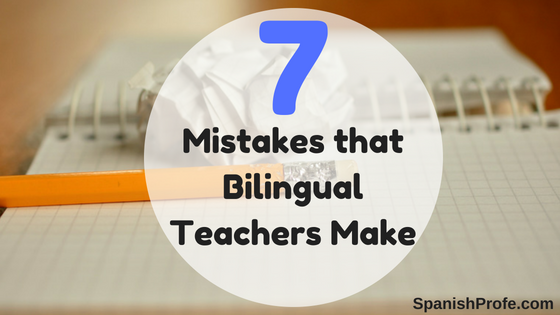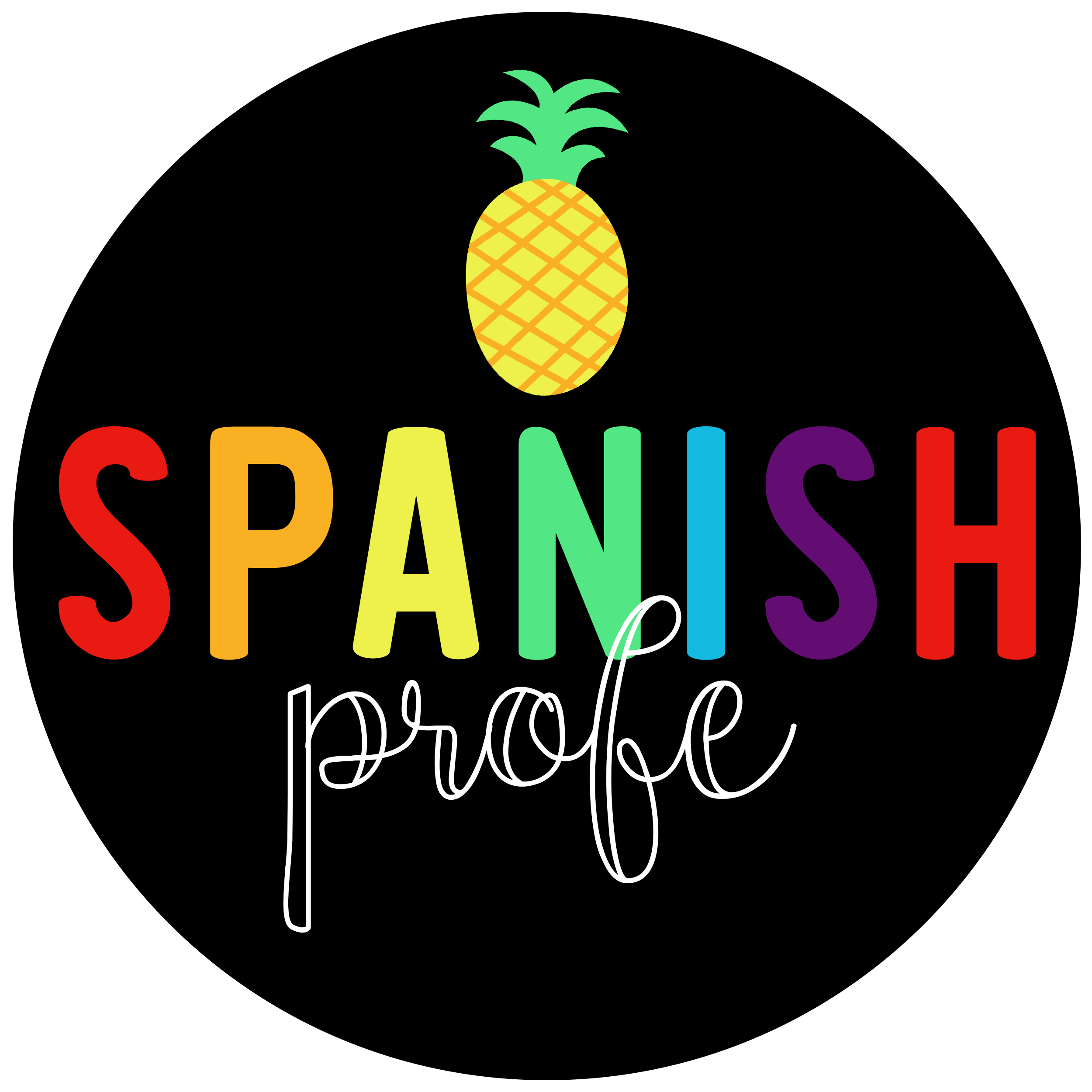Doesn’t matter if you are a new bilingual teacher or have 20 years under your belt, there is always room for improvement. Below I have compiled a list of the top seven mistakes that bilingual teachers make. Do you make any of them?
1. Translating:
One of the top mistakes I see bilingual educators making is translating something into the student’s native language (too soon). You should translate only if there is an emergency— Is there fire? Is the child in danger? A blank stare is NOT an emergency. If they don’t get it- use simple language, use signals, point, use visuals, have another child help get the message across but do NOT translate.
If a student knows that you are going to translate to their native language after they say ‘what?;’ or look confused, they are going to stop listening to what you are saying in Spanish (or English) and wait for you to make it easy for them.
Often some of our students will get in the habit of translating what we are saying to their monolingual classmates. Though this may be helpful the first couple weeks of school, it can get detrimental fast.
2. Code-switching
Code-switching is a talent that most bilingual people have. You can easily switch from one language to another. In the classroom, however, you need to focus on what your target language is for each particular part of the day. If you are supposed to teach language arts in Spanish, then do it 100% in Spanish. Do not speak English. Do not speak Spanglish. Stay in the target or focus language so your students can rightfully develop their academic skills while in your classroom.
If you (or your students) have trouble staying in one language, model what to do when you get stuck. Practice clarifying or asking how to say something when they need help.
¿Cómo se dice ‘character’ en español’?
How do you say ‘libro’ in English?
Yo sé que es ‘rhyme’ en inglés. ¿Cómo dice eso en español?
Be a model bilingual educator and be mutually exclusive in your use the languages in the classroom so your students can become fully bilingual.
3. Not accepting (or knowing) regional differences
This is one of my pet peeves….MANY bilingual educators seem to forget that there are 20 Spanish speaking countries. If you are Mexican, Argentinian, Spanish or Dominican your vocabulary is going to be different. You all speak the same language but there are some major regional differences.
A few examples:
The word ‘pool’ is commonly known as ‘piscina’ but regionally, like some entire countries; call it alberca or pileta.
The word ‘banana’ has MANY Spanish translations— banana, banano, plátano, guineo (and many more). Realize that banana and plátano are different things to many Spanish speakers. Banana = yellow ripe. Plátano = plantain (green banana). If you tell a Dominican or Puerto Rican kid that a yellow banana is a ‘plátano,’ they are going to look at you really weird and might laugh in your face.
As a bilingual educator, your job is to educate yourself and your students of these linguistic differences.
A quick way to acknowledge these regional differences in Spanish is say ‘yes ‘pileta’ is one way to say it… you can also say ‘piscina’. It is as easy as that. Or ‘does someone use another word for ‘bebé’?
Don’t shame your students for using words that are regionally accepted… educate them and expand their (and your) vocabulary.
4. Not making input comprehensible
I have realized that many teachers that work in Spanish immersion and bilingual programs do not have any formal education in language acquisition. They happened to speak Spanish and have experience as an elementary teacher.
To enhance language learning you need to make sure the Spanish (or English) you are using in the classroom is comprehensible. Use visuals, realia, pictures, gestures, model activities, visual examples, small steps or scaffolds are all ways to make (language) learning easier and more comprehensible for your students.
5. Having low expectations
I see many bilingual teachers assume that their students do not understand and they have low expectations of what they are capable of academically.
For example; during writers workshop, if you give a student a paper with 1 or 2 lines. How many lines will they write?
If you give a student a paper with 6, 8, or 10 lines it is very possible that they will produce a lot more language (more than you ever thought was possible). This is why it is important to differentiate. You will be able to see quickly, who needs 1 line, who needs 4 and who needs 10. Don’t assume all students need the same thing.
If you have high expectations and give students chances to succeed, they will. They will rise to meet your expectations and will often surpass them.
6. Not following programs expectations
FOLLOW YOUR PROGRAM’S MODEL!! After all, that’s what you are paid to do. If you don’t think it is the best model for you or your teaching style then find a different position for next school year. While you are in the position you are in, follow the rules.
Spanish 100% of the time! Perfecto.
English 50% of the time! No hay problema.
Math in English. Science in Spanish. Está bien.
Follow the rules and do what you are supposed to. Don’t argue. Don’t do whatever you want. Follow the bilingual or immersion model that is in place at your school.
7. Passing judgment on your colleagues
Assume that all teachers working at in your Immersion or bilingual program are capable beings. Don’t pass judgment because they are non-native speakers, Dominicans, Puerto Ricans, Chicanos, have wrinkled clothes, bad nails OR whatever it is that bothers you.
YOU DO YOU. Do your job and be the best maestra/o you can be. Don’t pass your judgment and your insecurities on to others. Everyone is good at something. Don’t assume that the non-native speaker is a bad teacher or a native speaker is an excellent one. Ask yourself if you are doing your best, and help others (not just students but teachers) do theirs as well.
If you make one of the above mistakes, what can you do to fix it to become a better bilingual teacher? What other mistakes do you see bilingual educators making?










